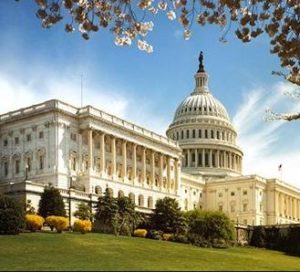Inside D.C.
The Blue Dogs are back!

I’m going to get all nostalgic here, recalling fondly the heyday of the House Blue Dog Coalition, a self-proclaimed caucus of conservative Democrats – consistently fiscally conservative, but verging moderate to liberal on some social issues — a gang I always thought out to be model for the rest of the two parties. While not much attention has been paid the group in recent years, the coalition this week unveiled an agenda of legislative priorities designed to appeal to rural America and the citizens who live there and who vote.
Those cynics among this city’s punditry contend the announced legislative agenda is inspired by the notion/hope the House majority could flip after the November midterm elections, putting the Democrats, albeit with new leadership, in charge. The Blue Dogs want not only to have a voice in the chamber’s agenda, but tamp down the “progressive” wing of their party. Those members running in swing districts, particularly in states won big by President Trump in 2016, hope to use the plan as a platform of sorts to take advantage of frustration with Trump administration actions on trade, tariffs and the rural economy.
Formed in 1995, the Blue Dog Coalition was supposed to give more conservative Democrats “a unified voice” after the party lost its congressional majority in the great GOP sweep of 1994. After growth of the caucus in the 2006 and 2008 elections – hitting a peak of 55 self-described Blue Dogs – membership was nearly halved in the 2010 election when 26 members were re-elected, but 28 either lost their seats or retired from Congress. Today, there are 18 members who acknowledge Blue Dog Coalition membership.
The name “Blue Dog” was inspired by the well-known “Blue Dog” paintings by Cajun artist George Rodrigue, according to www.bluedogdems.com, a PAC website. The term is reportedly a variation on the old practice of calling a strong Democrat Party supporter a “Yellow Dog Democrat” – someone who’d “sooner voted for a yellow dog than a Republican.” The founding members of the Blue Dogs said they been “choked blue” by the extremes of both political parties.
If the coalition’s Wikipedia site is to be believed, Blue Dogs are known for their collective search for the middle ground between liberal and conservative positions.
Veteran coalition member Rep. Jim Costa (D, CA), a senior member of the House Agriculture Committee and Blue Dog co-chair, says of his group’s rural issues plan unveiled this week is that it’s vital because “for too long Washington has taken a one-size-fits-all approach to economic policy. What works for big cities doesn’t always work for rural areas.”
So, for the Blue Dogs to reemerge publicly this week, their rural agenda demands at least a look-see. The five-part plan includes a “commonsense, bipartisan approach” to legislative priorities, including passing a new Farm Bill, addressing challenges within rural health care markets, a return to straightforward trade relationships without tariffs, lowering prescription drug prices, enacting infrastructure investment legislation, expanding rural broadband access and veterans’ rural health care access.
“If we’re going to send a message to our constituents that we care, we have to send it in a way that’s representative of what we need to be, why we need to do it, and have a plan for their future,” said freshman Rep. Tom O’Halleran (D, AZ), who chairs the group’s rural task force. I remember when similar things were said in 1994.

Add Comment